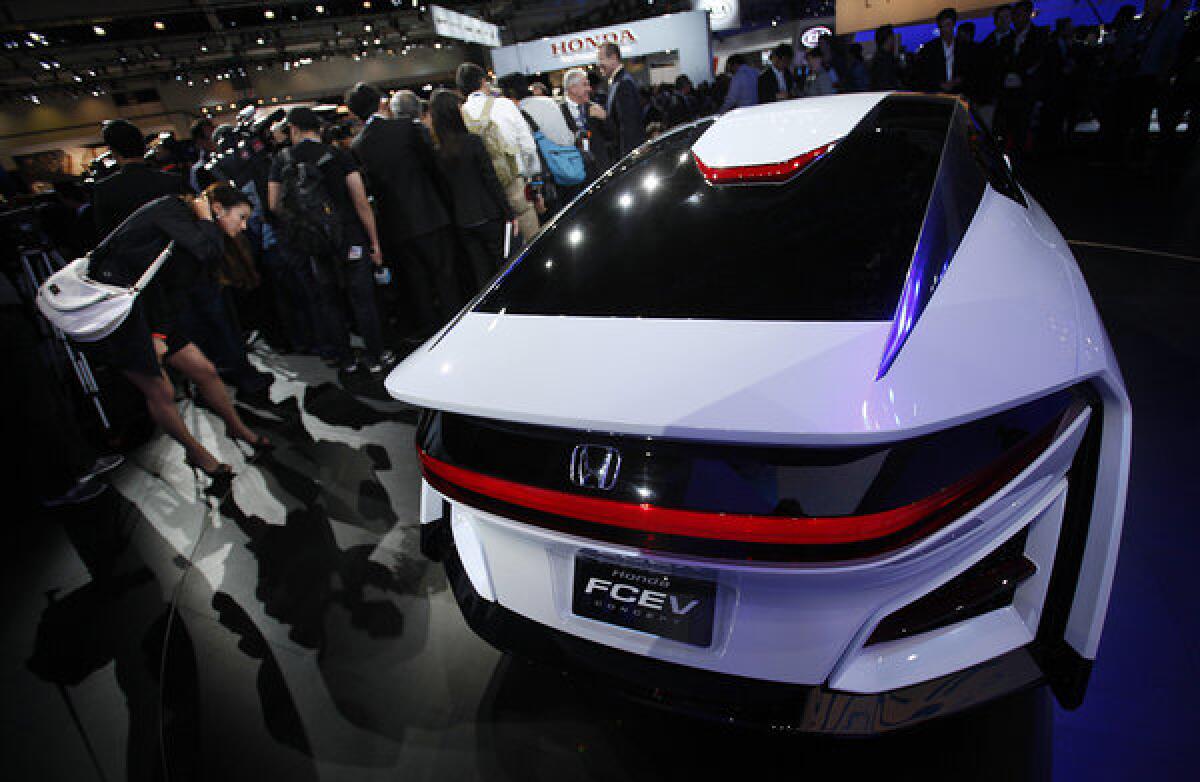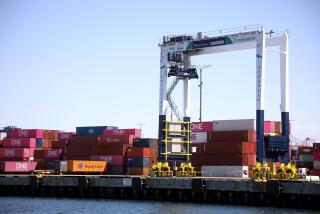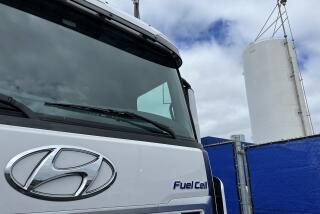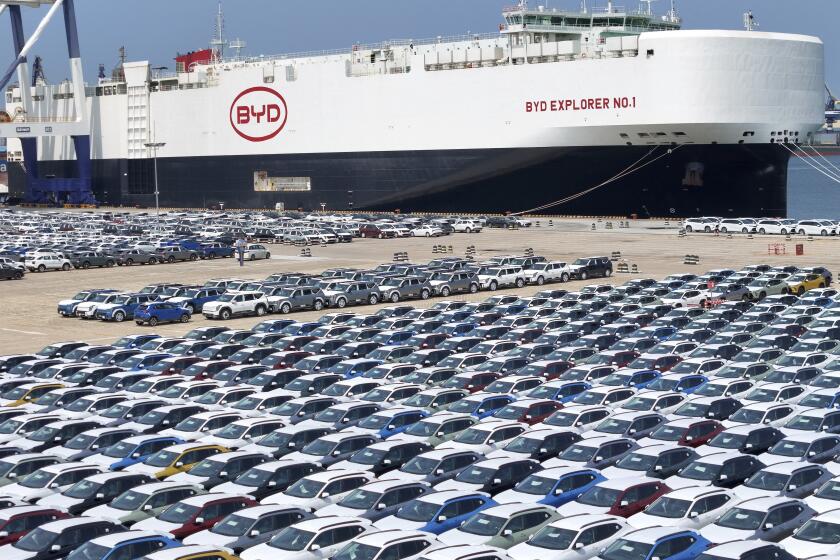L.A. Auto Show: Honda debuts fuel-cell concept car

Honda unveiled a hydrogen fuel-cell concept car at the L.A. Auto Show on Wednesday, a vehicle that has the same high-tech drive train that will be in the version of the car that will go on sale in the U.S. and Japan two years from now.
But the sheet metal of the sweeping, aerodynamic car is the whimsy of the automaker’s design team, and won’t make it to dealer showrooms.
“The Honda FCEV Concept hints at Honda’s future direction for fuel-cell vehicles,” said Tetsuo Iwamura, president and CEO of American Honda Motor Co. “While this car is a concept, it points toward a very real future.”
PHOTOS: L.A. Auto Show model debuts
Like the concept, the production version will seat five passengers and have a range of more than 300 miles, Honda officials said. Both are improvements from the four-seat and 240-mile range of Honda’s Clarity, a fuel-cell vehicle that it has made in limited numbers and leased for testing to about two dozen drivers in California.
Designers squeezed more room out of the interior by shrinking the size of the fuel-cell stack -- the hydrogen power plant that creates electricity to run the car -- by about a third.
This allows Honda to tuck the fuel-cell powertrain completely in the engine room of the vehicle, which makes for more cabin space, as well as flexibility in using the technology in other vehicles and body shapes.
“The advancements we are making are substantial, meaningful and very real,” said Mike Accavitti, senior vice president of American Honda.
Honda is one of three major automakers to introduce fuel-cell vehicles planned for sale in the U.S. within two years.
Hyundai also showed off a fuel-cell version of its small Tucson crossover at the L.A. Auto Show on Wednesday. The automaker said the car, which also has a 300-mile range, will go on sale in the U.S. next year.
Hours earlier, Toyota unveiled its fuel-cell entrant at the Tokyo Motor Show.
Other automakers plan to enter the market in later years.
“Honda, Hyundai and Toyota have all made a huge step forward this week. Their cars represent the first generation of FCEVs, cars that perform and refuel like a traditional gas or diesel car, minus the emissions,” said Byron McCormick, a former General Motors fuel cell specialist and non-executive director of ACAL Energy. “This is the first step toward a hydrogen economy.”
FULL COVERAGE: L.A. Auto Show 2013
Some automakers are more skeptical. Volkswagen Chief Executive Jonathon Browning said the company chose to produce a battery-powered Golf hatchback rather than a fuel-cell car for one simple reason: “Most people know where to find a socket,” he said. “Not too many people know where to find a hydrogen fueling station.”
Diesel, hybrid and battery electronics show more promise as alternative drive-trains. “Hydrogen is largely a discussion at this point,” he said.
This year, Honda reached an agreement with General Motors to co-develop the next-generation of fuel-cell systems and hydrogen storage technologies. Cars based on that jointly developed technology are expected to hit the market about 2020. The two companies will share technological expertise, economies of scale and common sourcing strategies.
Technological advancements that have reduced the cost of the vehicles and improved their durability and range, as well as environmental regulations are behind the fuel-cell car push.
California has stringent environmental regulations, which require 15% of the new cars sold in the state by 2025 to be zero-emission vehicles. An additional nine states have adopted the same sales goals, with a target of having 3.3 million zero-emission vehicles on the road by 2025.
The fuel-cell cars drive like normal vehicles and have about the same amount of interior space as regular vehicles of similar size. They take three to five minutes to fuel up. The fuel nozzle locks into the car to prevent hydrogen leaks but is otherwise similar to a gasoline pump.
For now, there are few places to fuel the cars, although three stations are spaced along the busy 405 Freeway in Torrance, Fountain Valley and Irvine, and there are some similar clusters on the East Coast.
There are plans to build more as automakers start to sell fuel-cell cars. California is spending as much as $20 million a year to help bring the number of fueling stations up to 100 within the next five years or so, according to the California Fuel Cell Partnership. There should be 28 hydrogen stations spread across California’s metropolitan areas by 2015.







